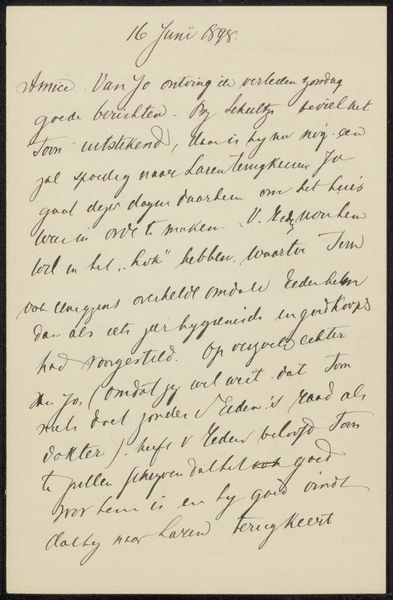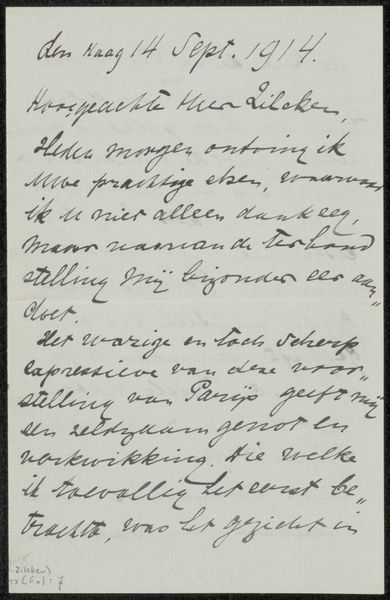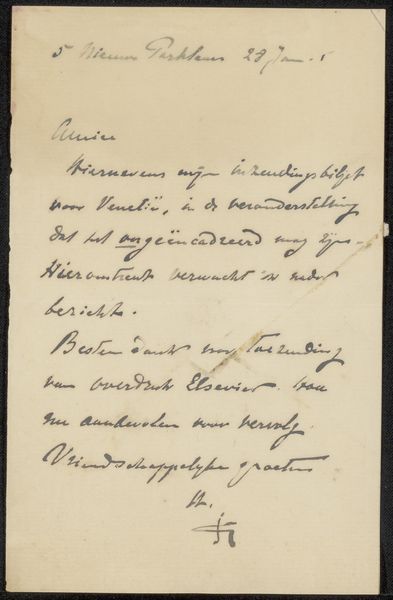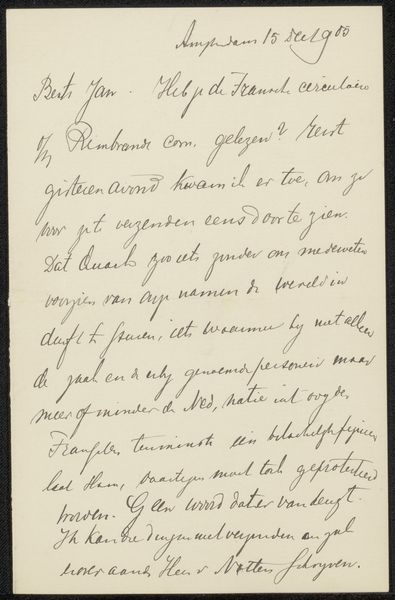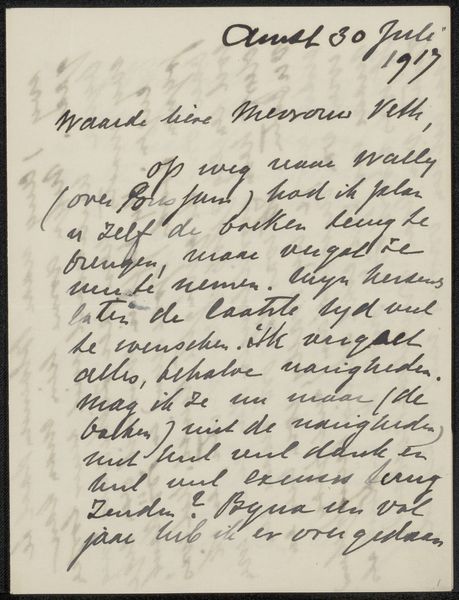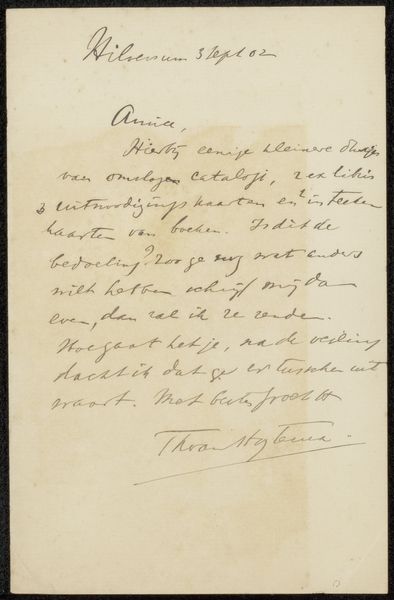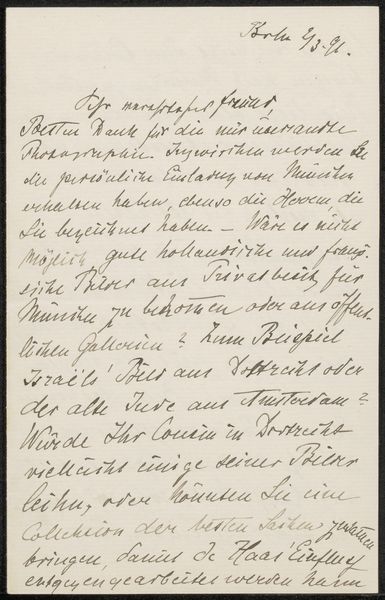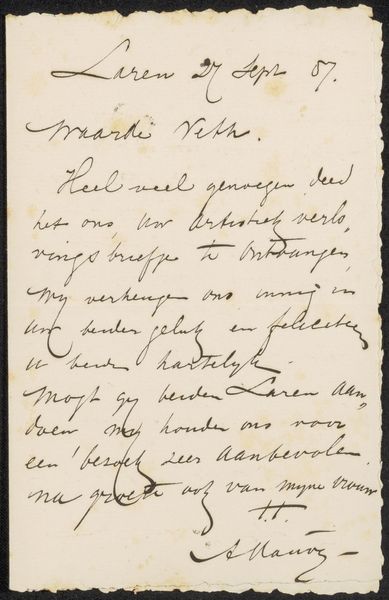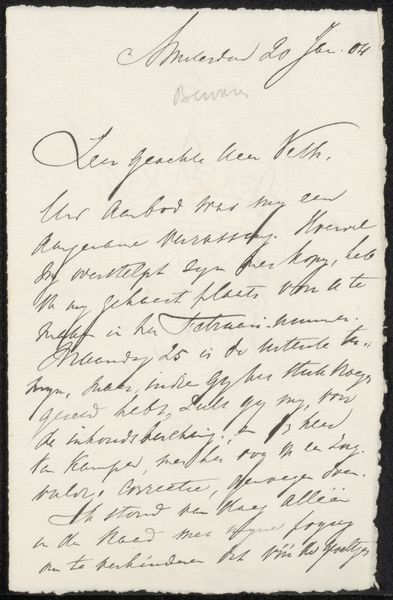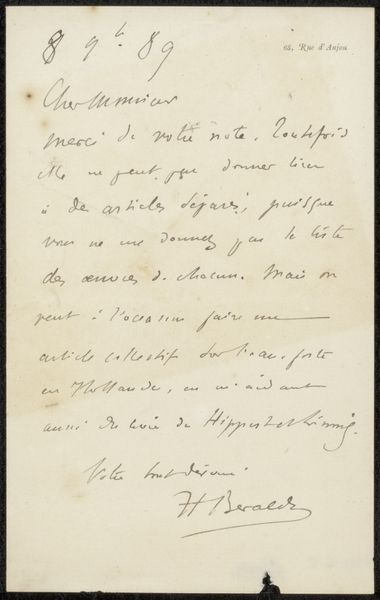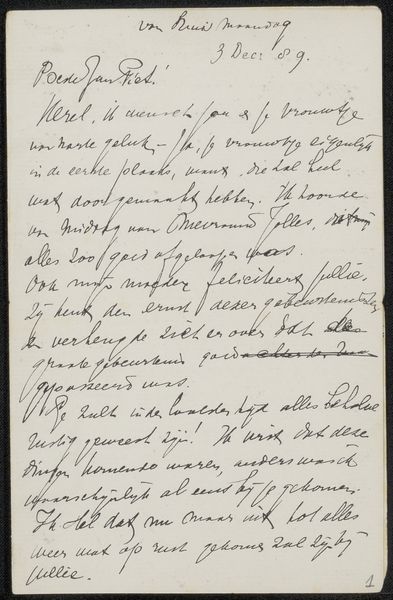
drawing, ink, pen
#
drawing
#
art-nouveau
#
pen drawing
#
old engraving style
#
hand drawn type
#
personal sketchbook
#
ink
#
ink drawing experimentation
#
pen-ink sketch
#
ink colored
#
pen work
#
sketchbook drawing
#
pen
#
sketchbook art
Copyright: Rijks Museum: Open Domain
Curator: We're looking at "Brief aan Philip Zilcken" (Letter to Philip Zilcken), a drawing in ink and pen, possibly from around 1901-1911, by Jan Zoetelief Tromp. Editor: The immediate feeling I get is one of intimacy, a direct line to the artist’s thoughts. It's informal and immediate. The script gives me that feeling...a personal note caught in time. Curator: Absolutely. It embodies Art Nouveau's love of the handcrafted and the personal touch. Note the delicate lines of the pen work, and the integration of text as image. This speaks to a pre-mass production sensibility, valuing unique expression. The hand-drawn lettering in itself becomes a visual element. It could come out from a personal sketchbook. Editor: Yes, and that hand-drawn quality underlines its context. Letters have, sadly, been largely displaced as means of personal communication. The art here isn’t just the visual craft of the letter; it's in its intention of intimate human connection, in sharing information. Curator: Indeed, it suggests a particular kind of cultural exchange. Think of the role letters played in artistic circles at the time, spreading ideas and forging connections between individuals. Editor: And also a reflection of social standing. Not everyone would have had the leisure, time, or skill to write such a letter. What was the relationship between Tromp and Zilcken, I wonder? The content, mentioning exhibition space, implies professional respect or collegiality. Curator: Very possibly, this letter is more than simply conveying information; it also enacts and performs their relative positions. Letters offer such a nuanced understanding. It represents more than written intentions: power dynamics, aesthetics, cultural values. Editor: Which highlights that shift when we now see it as art. We’re observing something that, in its own time, occupied an interesting social role now fossilized as artefact. We get to unpack all of that contained history. Curator: Exactly! It becomes a symbol of a particular kind of cultural moment—when handwriting still conveyed social standing, a visual marker of education and status. Editor: And the emotional labour that involves, particularly as means for solidifying artistic networks...food for thought. Curator: A very fitting consideration, given our current position!
Comments
No comments
Be the first to comment and join the conversation on the ultimate creative platform.
